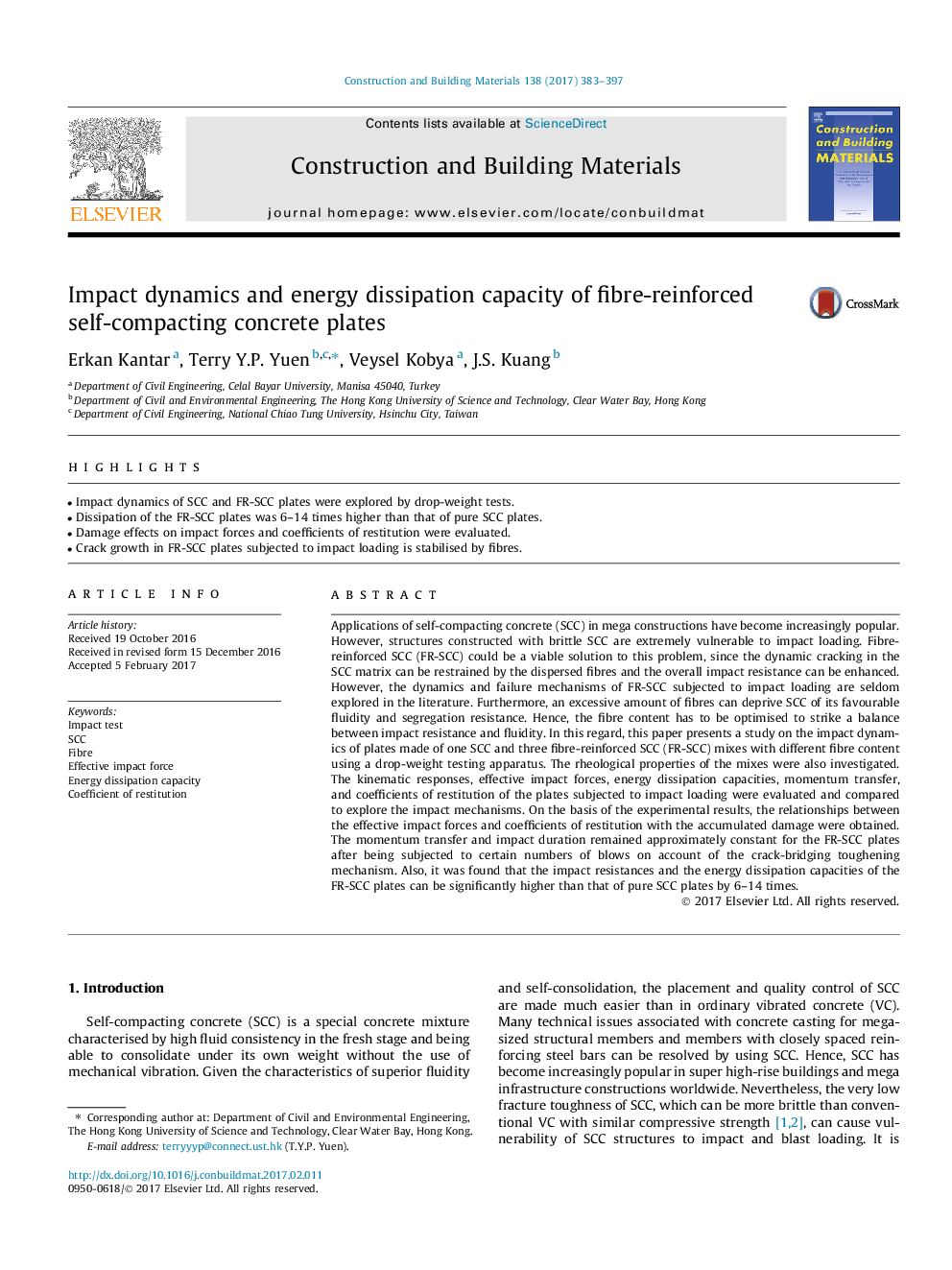| Article ID | Journal | Published Year | Pages | File Type |
|---|---|---|---|---|
| 4913728 | Construction and Building Materials | 2017 | 15 Pages |
Abstract
Applications of self-compacting concrete (SCC) in mega constructions have become increasingly popular. However, structures constructed with brittle SCC are extremely vulnerable to impact loading. Fibre-reinforced SCC (FR-SCC) could be a viable solution to this problem, since the dynamic cracking in the SCC matrix can be restrained by the dispersed fibres and the overall impact resistance can be enhanced. However, the dynamics and failure mechanisms of FR-SCC subjected to impact loading are seldom explored in the literature. Furthermore, an excessive amount of fibres can deprive SCC of its favourable fluidity and segregation resistance. Hence, the fibre content has to be optimised to strike a balance between impact resistance and fluidity. In this regard, this paper presents a study on the impact dynamics of plates made of one SCC and three fibre-reinforced SCC (FR-SCC) mixes with different fibre content using a drop-weight testing apparatus. The rheological properties of the mixes were also investigated. The kinematic responses, effective impact forces, energy dissipation capacities, momentum transfer, and coefficients of restitution of the plates subjected to impact loading were evaluated and compared to explore the impact mechanisms. On the basis of the experimental results, the relationships between the effective impact forces and coefficients of restitution with the accumulated damage were obtained. The momentum transfer and impact duration remained approximately constant for the FR-SCC plates after being subjected to certain numbers of blows on account of the crack-bridging toughening mechanism. Also, it was found that the impact resistances and the energy dissipation capacities of the FR-SCC plates can be significantly higher than that of pure SCC plates by 6-14 times.
Related Topics
Physical Sciences and Engineering
Engineering
Civil and Structural Engineering
Authors
Erkan Kantar, Terry Y.P. Yuen, Veysel Kobya, J.S. Kuang,
